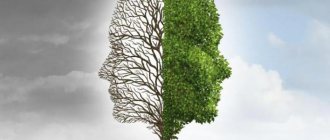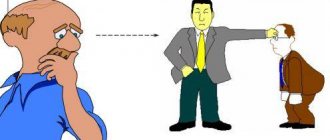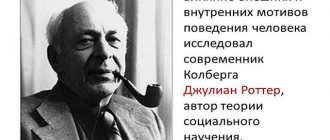A patient swallows a sugar pill that lacks the active drug or undergoes a “surgery” that involves only incisions—this is what a placebo effect trial looks like. The mind can have a powerful influence on the body, and in some cases even help it heal. The pain subsides, the nausea goes away, and the mood lifts. How great are the possibilities of a placebo and how dangerous is its counterpart - the nocebo effect, Izvestia looked into.
Will it cause harm: more than half of Russians do not care about their health
There are especially many people who are indifferent to their well-being - at the age of about 50 years
What is the placebo effect in simple words: how it works
The term placebo effect was first coined by American military physician Henry Beecher in a 1995 article entitled “The Mighty Placebo.” He discovered it during World War II in 1944. There was no morphine at hand at the right time. Henry Beecher took extreme measures - instead of painkillers, he injected saline into the soldier’s thigh . And to his surprise, the soldier felt better.
The placebo effect is a subjective feeling of relief after taking dummy drugs, or after procedures that are unlikely to significantly affect the patient's body. What are the procedures, you ask? This can be anything that will make the patient believe in the effectiveness of the therapy, from talking with the doctor to reading a spell.
In simple terms, the placebo effect is a situation where a person gets better if he is sure that he is really being treated.
How does he work? The placebo effect is based on suggestion and self-hypnosis. Under its influence, a number of neurophysiological mechanisms are activated, which cause an improvement in the patient’s well-being. These same mechanisms (endocannabinoid, endorphin, dopaminergic systems) are activated during laughter or sex.
A placebo rarely cures a disease, but it can improve the patient's condition or eliminate symptoms.
Tricks of invention
The placebo effect has a long and rich history. It played a big role in the medicine of past centuries, when patients had to be treated with herbs and useless drugs.
The first scientific demonstration of the placebo effect occurred in 1799, when the British physician John Haygarth decided to test one of the “healing” drugs that were sold in shops at the time: expensive metal rods called “Perkins tractors” that supposedly drew diseases out of the body and helped to cope. with rheumatism thanks to a special alloy. Haygarth replaced the “healing” metal rods with wooden ones and, under the guise of “Perkins tractors,” offered them to subjects. Four out of five patients with rheumatic fever reported that their pain had improved.
We are happy to be deceived
Caricature of Elisha Perkins trying to cure a patient with his metal "tractors", 1754
Photo: Getty Images/Photo 12
The term itself first appeared in 1920 in an article in The Lancet. The placebo effect came into clinical practice after American anesthesiologist Henry C. Beecher noticed during World War II that some wounded people mistook regular saline as a painkiller.
Farm factor: the EAEU may have its own medical agency
A single regulator, an analogue of the European EMA, will speed up the registration of drugs in the member countries of the union
At Dr. Beecher's insistence, placebos became the basis for double-blind drug trials, in which one group of people was given the real drug and the other a sham drug. A drug was considered effective only if it was statistically superior to placebo.
Why placebos work: reasons
- Expectation of improvement, psychological placebo effect. Everything is simple here: if a person expects to get an effect from treatment, then he gets it. The doctor may be too convincing, backing everything up with a bunch of procedures. Whether you like it or not, you will believe in the effectiveness of the treatment. But a placebo cannot always help ; objective indicators , for example, blood sugar levels, will remain at the same level . A person can feel some kind of relief, but only through faith.
- Conditioned reflex. In Pavlov's dogs, the bell causes drooling even if there is no food. For a placebo, such a call is pills, a doctor, a white coat, injections, etc. Over the course of his life, a person gets used to the fact that after taking pills, powder, or giving an injection, he feels better. Due to the reflex, the pacifier causes the same sensations. Types of placebos can affect people differently.
- Natural recovery. The body can cope with the disease on its own, which may coincide with the period of taking real medications or dummies, which is why patients and doctors may be confused.
Which placebo is more effective and what affects it?
| The placebo effect depends on the form of release. Injection is the most effective form. Next comes the capsule and finishing the top three is a regular tablet. | What about sizes? You may not be surprised, but a large placebo pill has a greater effect than a small one. | With the dosage, everything is also logical; if a person takes two placebo tablets, the effect will be stronger than that of someone who was given one tablet. |
| Taking two placebo tablets at once is more effective than taking one twice a day. | Even color matters . Blue placebos will have a stronger effect as a sedative, and yellow placebos will work better as an antidepressant. | Let's not forget about the brand and price . An expensive and well-known drug will get you back on your feet faster than a cheap and unknown analogue. |
How alternative medicine uses the placebo effect
The placebo effect looks like the “thought healing” that alternative medicine practitioners often talk about. But the placebo effect is not about healing at all. A placebo changes the psychological picture of the perception of the disease, but does not treat the disease itself or eliminate its cause. That is why prescribing a placebo when there are drugs with proven effectiveness or it is known that a placebo will not help in any way is a violation of medical ethics.
But alternative medicine still uses the placebo effect: thanks to it, people believe that it is helping them. There are many ways to convince a person:
- Special devices and unique diagnostics. For example, the famous Voll method or bioresonance therapy - they create the appearance of an examination using special devices (the effectiveness has not been proven scientifically).
- Difficult to obtain. For example, shaking systems, programming the “medicine” to heal, the rarity of specialists or ingredients.
- External impression and reviews. For example, in the healer’s waiting room there may be special people who admire him, or the atmosphere will make an impression: strange instruments, diplomas and letters of praise on the walls.
- Attentiveness to the patient. Homeopaths and healers usually listen to visitors much more than regular doctors. They surround them with attention, which makes it seem that all the problems have been carefully studied, the causes have been identified, and therefore they will definitely cure them.
- Guarantees of success. Doctors are well aware that they are not omnipotent: even with modern diagnostic capabilities, it is not always possible to find the cause of the disease, it is not always possible to find the right drug. With healers in alternative medicine, everything is different: they convince that everyone gets better.
- Price. This is often used shamelessly: many people believe that good things cannot be cheap. Additionally, we don't want to feel like we wasted our money and effort, which further encourages us to believe that we're feeling better.
Homeopathic medicines work due to the placebo effect, and some of them are even prescribed by ordinary doctors. This isn't always a bad thing: sometimes people really need something to make them feel calmer. For example, ARVI does not need to be treated, the body copes with it on its own, and all prescriptions are needed to make the disease easier to bear. After all, it is much more pleasant to breathe through your nose and not have to endure a sore throat or fever. But it is unlikely that many people will react calmly if the doctor does not treat them. So sometimes doctors prescribe not only symptomatic remedies, but also homeopathy: for example, Anaferon, Ergoferon, Viferon or Oscillococcinum. There will be no harm from them, however, there will be no benefit either - except perhaps in the form of income in favor of their manufacturer.
For what purposes is placebo used: examples
It would be strange if people did not use the healing bonus from the body in their lives. Where is the placebo effect used and when is it appropriate?
In pharmacotherapy
Treating a person with a placebo in medicine is considered unethical . After all, prescribing to a patient any drugs that have nothing in common with drugs in the usual sense is deception.
According to recommendations from international and national organizations, physicians should not use placebos as part of therapy. Especially for the treatment of serious diseases, such as autoimmune, infectious and oncological diseases.
Oxford and Southampton University conducted a joint study in which they found that 97% of British doctors had given a placebo to patients at least once in their medical practice.
Despite the absence of indications indicating the need to use a placebo, doctors sometimes prescribe a dummy drug to a certain circle of patients. For example, to check whether drug treatment is required or whether psychotherapy will be sufficient.
This technique is especially relevant for suggestible people, hypochondriacs (people who are overly concerned about their health) or for people with anxiety disorders.
This way you can avoid the use of various medications . By the way, homeopathy is based on the same placebo effect.
Interesting Obecalp tablets are produced in the USA (just read the name backwards to understand how the medicine works). The tablets consist of sugar and are given to children to “cure laziness.”
The placebo effect works best for psychosomatic illnesses. It activates neurological and mental mechanisms, thereby increasing the activity of the prefrontal cortex, nucleus accumbens and pleasure center.
The work of these areas contributes to the production of substances that reduce anxiety and fear, as well as have a relaxing effect. A positive emotional state can help a person recover, but does not guarantee it.
Placebos are also used to relieve pain when the desired drug is not available. Well, placebos can also be used unknowingly, for example, if the doctor thinks that the drug is effective, but in fact it does not work.
In narcology
The placebo effect is also used in addiction medicine. Coding and stitching exploit the placebo effect.
The authority and confidence of the doctor, supported by tablets, ampoules and various procedures, help a person to believe in the effectiveness of treatment. Ignorance and lack of education also play a major role in addiction treatment.
At the end of therapy, the patient is sure that if he abuses alcohol or drugs again, he will die.
In order to convince the patient of the effectiveness of treatment and instill fear in him, the doctor uses a variety of methods during therapy.
In addition to pills, ampoules and hypnosis, a contract can be used, according to which the patient bears all responsibility for a possible breakdown. Simulated surgeries are also often used to mislead patients.
During the procedure, the doctor may use a method based on provocation . A solution of nicotinic acid or magnesium sulfate is injected intravenously, and they, in turn, cause fever and suffocation. Then the patient drinks alcohol, and it begins to seem to him that the fever and suffocation are caused by alcohol. What do we get as a result? The fear of death intensifies.
In clinical trials
Why else do you need a placebo? Most often it is used in clinical trials as a control drug, that is, to test the effectiveness of new drugs . New drugs that pharmaceutical companies create should work better than placebos. How are the tests carried out?
The subjects are divided into two groups: the first group is given an experimental drug, the other group is given a placebo. The health status of the first group must not only improve, but be significantly better than that of the second, in order for the drug to be considered therapeutic. That is, if a medicine shows itself to be worse or not much better than a placebo, then it is sent for revision.
A clinical trial is called “blind, placebo-controlled” if only the attending physician knows who is receiving what.
But the most reliable is considered to be a “double-blind, placebo-controlled study . Its essence is that neither the staff nor the subjects know who receives the placebo and who receives the drug. It is considered the most reliable, since the doctor will be more convincing, plus the doctor will not be able to accidentally reveal the secret to the patient through facial expressions or gestures.
All these studies can also be randomized , that is, patients are randomly selected into groups.
Recently, there have been increasing proposals for placebo-controlled studies to include three groups . The first two would receive a placebo and an experimental drug, while the third would receive nothing. What is it for? To separate the placebo effect from the real effect (self-healing of the body) and other unaccounted factors.
The nocebo effect: when thoughts create illness
06.Jul.2020
We know what the placebo effect is - you take a “pill” that does not contain any drugs, but you feel better. Unfortunately, the placebo effect has a lesser-known antipode - the nocebo effect. This means that if we wait for illness, we can get sick without objective reasons.
The nocebo effect often manifests itself in anxious people with neurotic disorders, but during the coronavirus pandemic, people with a stable nervous system have succumbed to the influence of the media, beginning to identify symptoms and concluding that they have COVID-19. This phenomenon can be given the following explanation: “The effect of mass suspiciousness.” Below we will take a closer look at what the “nocebo effect” is.
The development of almost any illness is influenced by the emotional sphere of a person. For example, the root cause of peptic ulcers is Helicobacter pylori, which is present in 90% of people. But those who get sick are those who, as a result of emotional experiences, have conditions in their bodies for the successful reproduction of bacteria.
Strong imagination creates an event
Word of mouth has a nocebo effect. “As soon as a person who has nothing to do with professional medicine spreads a rumor that a certain medicine has a negative effect, everyone immediately refuses it. Although they were often treated with it for many years and were satisfied with the result.
Sometimes television plays the role of word of mouth. For example, once on TV they spread information that a French antidepressant was used by drug addicts. Immediately there was a wave of refusals, although the drug had excellent performance indicators and is used throughout Europe.
Everything is material, even anxiety
Placebo and nocebo effects have very real manifestations in the human brain and are explained by material reasons. They were identified by John-Kar Zubieta from the University of Michigan using positron emission tomography (PET). The scientist demonstrated that the nocebo effect is associated with a decrease in the production of the hormone dopamine, which is involved in the production of opioid peptides that have an analgesic effect. This explains why nocebo increases pain.
Nocebo effect in men and women
Anxiety in the form of a nocebo effect occurs more often in women than in men. But men can also be anxious, and their problem is that they push their anxiety inside themselves and do not discuss their suspicions with a doctor.
In men, the development of the nocebo effect is more strongly influenced by the expectation of illness than by life experience and information about the illness. The opposite is true for women. “Women rely more on past experience, while men are very reluctant to take the past into account when analyzing a specific situation,” says Paul Enck, a psychologist at the University Hospital of the University of Tübingen (Germany).
Useful tips
Remember that the emotional state syndrome develops gradually against the background of prolonged psycho-emotional stress and leads to the depletion of personal resources. This occurs as a result of a long-term accumulation of negative emotions without a corresponding “discharge”, which in turn affects the emotional sphere of a person and creates the ground for “nocebo”.
As the experience of psychologists shows, the most effective are natural methods of self-regulation of the body:
Love of life. “My advice is to avoid the nocebo effect, trust articles in the non-professional press less;
Think that a new fine day is coming, you are surrounded by family and friends, you have an interesting job, and you will meet friends on the weekend”;
Changing worldview. “A person always has a choice - what to do, what to think and feel. He can “drown” in negative emotions and, as a result of the nocebo effect, become drawn into an illness that he might not have had at all. In this case, you need to radically change your worldview and lifestyle.”
- looking at photographs or paintings;
- certain physical activity (exercise);
- listening to the sounds of nature;
- Fresh air.
There are other methods besides natural technologies:
1. Control your breathing.
This practice is an effective means of influencing muscle tone and emotional centers of the brain. Deep and slow breathing reduces the excitability of nerve centers and promotes muscle relaxation.
2. Monitor muscle tone and movement.
Under the influence of mental stress, muscle clamps and tension occur. The ability to relax them allows you to relieve mental stress and quickly restore strength. As a rule, it is impossible to completely relax all the muscles at once; you need to focus on the most tense parts of the body.
3. Control over thinking.
The process of self-hypnosis affects a person’s emotional state. It is necessary to formulate wording in the form of short sentences with a positive focus.
4. Drawing.
It is important to understand that drawing ability does not play any role, but it is important to use pencils, markers and paints to express emotions in an abstract form.
Think positively and live positively, even if you are at home! Take care of yourself and your loved ones!
The placebo effect can manifest itself in sports and creativity: examples
What else is placebo used for? Every year, more and more new studies appear that indicate that the placebo effect can affect different areas. For example, it improves cognitive and creative abilities, increases endurance.
Incredible Endurance
Sometimes you don’t even need to accept anything , it’s enough just to convince a person of his unique abilities. Scientists from Stanford have proven this. As usual, the subjects were divided into two groups, and each was tested for the gene responsible for endurance, CREB1.
The participants in the experiment were not informed about the results, then the groups were mixed among themselves. One group was told that nature had endowed them with unique endurance, the other group was told that the sport was not for them. All subjects were sent on treadmills. What came of it?
And the result is this: those who were told about incredible endurance ran further and faster (compared to the results before the experiment), regardless of actual genetics.
Creativity and smell
Another example of the placebo effect. To experiment on creativity, researchers used a placebo in the form of an odor . The beginning of the study does not change: participants were divided into two groups. Only this time both groups were exposed to the same odor.
The first group was told that the smell they inhaled increased creativity, the second group was not told anything. People from the first group showed higher results in tests compared to previous results.
Nocebo: what is it?
The opposite of placebo. From Latin, nocebo means to harm, and placebo means to please.
This is a phenomenon when people voluntarily believe and are convinced that bad events, negative signs, damage, conspiracies, witchcraft can influence them and cause harm. This is the other side of suggestibility. The person sincerely believes that the curse can kill him. But another important factor is the impact on the victim of public opinion, especially those close to him, who are also convinced of the sad outcome. Such a person will literally dry up before our eyes. Even if there are no real physical indications. The body simply turns on the self-destruction program. Can you imagine?
That is. It all starts with our thoughts. From our faith in what is happening. We are capable of both killing ourselves and curing ourselves of the most terrible diseases if we sincerely believe in it. Just by the power of thought. This is incredible!
In Japan, an experiment was conducted: children with a pronounced allergy to poison ivy leaves were rubbed with this plant on one hand, but they were told that these were ordinary sakura leaves. And they rubbed their other hand with sakura leaves, but they said it was poison ivy. And 11 out of 13 children did not even have a hint of an allergic rash. Moreover, a rash appeared on the hand that was rubbed with harmless sakura. Just think about it. By the dictates of thought, we are able to create problems for ourselves.
But what about real life? And how many of these negative beliefs spread to the masses?
A simple example: autumn is the season of colds. People already automatically believe that in the fall their immunity decreases and resistance to the disease will be low. This is the nocebo effect in action. And belief in miraculous antiviral drugs is an example of a placebo. Well, or an example: you believe in the evil eye, and no matter how you try to “defend yourself,” troubles still overtake you.
What are we talking about? Let's stop blindly believing that someone or something can harm us. Let’s take control of our lives into our own hands and change our reality with our own beliefs.
Does the placebo effect occur in animals?
Think the placebo effect only affects people? Then you are mistaken, animals are also susceptible to it, at least dogs.
A study was conducted involving dogs with epilepsy. They, just like people, were divided into two groups: the control group received the medicine, the experimental group was given a placebo.
Scientists found that 79% of dogs in the experimental group showed improvements. Scientists have three theories to explain why the placebo worked.
- Owners' expectations. The confidence of the owners that the treatment will have a positive effect is transferred to their pets.
- Animal expectations. Everything here is based on a conditioned reflex. If the animal has already had to take any medications before, then it knows that after taking them the condition will improve.
- Epilepsy manifests itself in cycles. The dogs in the experimental group are at the peak of the disease, so it is likely that the disease will subside for a short time and the symptoms will decrease.
Nocebo effect: reverse effect
The nocebo effect, the opposite of placebo, is said to occur when patients are told that a “dummy” has a number of harmful or dangerous properties. For example, people with lactose intolerance are given a harmless drug, but they note that it contains lactose. Almost half of the subjects showed gastrointestinal disorders that would have occurred if they had actually taken a lactose-containing drug.
This group also includes cases when a person, having believed that he is suffering from some disease, begins to actually experience its symptoms.
Who is more susceptible to the placebo effect?
It all depends either on certain personality traits or on genetics . Let's start with genetics.
- Several studies have been conducted on people with certain diseases. form of the 5-HTTLPR gene are most sensitive to the placebo effect . This was confirmed by researchers from Harvard, who found that the potency of a placebo depends on the shape of the gene encoding an enzyme that is involved in the breakdown of dopamine.
- Several studies suggest that personality traits also play an important role. Thus, the painkiller placebo has a greater effect on optimists, and on pessimists in a stressful situation.
- Cultural factors that shape personality traits also have a certain influence, so people from different countries with different diseases are differently susceptible to the placebo effect. For example, ulcer sufferers from Germany are more sensitive to placebo than people with the same diagnosis from Brazil.
And finally, we can highlight a few more people for whom placebos help better than others. As has already been written, the effectiveness of placebos depends on suggestibility, so pacifiers have the greatest effect on:
- insecure people with low self-esteem;
- weak-willed people;
- people with a weak or fragile psyche, this includes the elderly and children.
Placebo studies
Placebos have proven their effectiveness many times.
- Treatment of migraines. In 2014, a study was conducted in which a placebo was used to improve the well-being of patients with migraines. It studied 66 people who were given a placebo, the drug Maxalt, and a placebo labeled Maxalt. There were three groups where scientists actively changed the labeling. As a result, an effectiveness table was formed, where Maxalt took first place, the Maxalt placebo was second, and the simple placebo was last. At the same time, the effect of the Maxalt “dummy” and its real analogue turned out to be comparable. Bottom line: Labeling matters.
- Improving well-being in cancer. One of the “joys” that cured cancer gives is fatigue, which sometimes becomes chronic. In 2021, 74 cancer survivors effectively treated their fatigue with a placebo. This is evidenced by relevant research.
- Reduced symptoms of depression. In 2015, scientists studied 35 people with depression. They were given a placebo and then antidepressants. As a result, it turned out that this approach helps improve the response to professional treatment with special drugs.
The placebo effect can work even if you know it's happening
It is logical to assume that for effective treatment you should not tell the patient that he will be treated with useless pills. Is it so?
There is some logic to this, but it turns out that placebos work even if the patient is aware of the composition of the medicine being taken.
This is proven by a study conducted at Harvard University. Participants in the experiment suffered from migraines. They were divided into three groups, one of which was given a drug for migraines, the second group received nothing, and the third received a placebo, only in this case there was information about this on the packaging.
At the end of the study, the researchers found that the placebo reduced migraine pain as effectively as the real medicine.
The head of the placebo research program at Harvard Medical School, Ted Kaptchuk, argues that the healing power is the process itself , that is, unpacking the medicine, taking the pill.
Even if a person knows that this is a pacifier, on a subconscious level the ritual of taking the drug is associated with a healing effect.
The appearance of the pill and the process of taking it makes the brain think that the drug will help the body heal.
What does a placebo help with?
Placebo alleviates L. Colloca, R. Klinger et al. Placebo analgesia: Psychological and neurobiological mechanisms / Pain pain and helps TJ Kaptchuk, E. Friedlander et al. Placebos without deception: A randomized controlled trial in irritable bowel syndrome / PLoS ONE in irritable bowel syndrome, restores AC de Araujo, FG da Silva et al. The management of erectile dysfunction with placebo only: Does it work? / The Journal of Sexual Medicine erection and coping R. Eccles. The powerful placebo in cough studies? / Pulmonary Pharmacology & Therapeutics with cough. Dummy tablets reduce CG Goetz, J. Wuu et al. Placebo response in Parkinson's disease: Comparisons among 11 trials covering medical and surgical interventions / Movement Disorder symptoms of Parkinson's disease can halve I. Niklson, P. Edrich, P. Verdru. Identifying baseline characteristics of placebo responders versus nonresponders in randomized double-blind trials of refractory partial-onset seizures / Epileptic Disorders frequency of seizures in epilepsy.
Placebos are also used by A. Hróbjartsson, P. C Gøtzsche. Placebo interventions for all clinical conditions / Cochrane Database of Systematic Reviews for insomnia, anxiety, fatigue, hypertension, depression A. Khan, N. Redding, WA Brown. The persistence of the placebo response in antidepressant clinical trials / Journal of Psychiatric Research, obesity, smoking, asthma, dementia and sometimes prescribed 1. A. Hróbjartsson, M. Norup. The use of placebo interventions in medical practice - A national questionnaire survey of Danish clinicians / Evaluation & the Health Professions 2. Questionnaire survey on the use of placebo / BMJ for patients who really want to be treated, but have no indication for it.
If you have used alternative medicine methods to combat these diseases, you should think about their effectiveness.
Interesting facts about the placebo effect
- A placebo can cause side effects characteristic of the drug under the guise of which the dummy is served;
- People taking dummy pills may become addicted . Even healthy people who have stopped taking placebo may experience withdrawal symptoms: the patient’s condition begins to deteriorate;
- about 50% of doctors prescribe medications to their patients that will not bring benefit, relying on the placebo effect;
- the placebo effect can be recorded by positron emission tomography of the brain;
- children are more susceptible to drugs that do not have medicinal properties;
- The mechanism of action of placebo has not been fully studied.
The effect of placebo on the human body
The effect of a placebo varies in strength depending on many factors.
For example, an injection produces a stronger placebo effect than a pill. Two tablets work better than one, capsules are stronger than tablets, and larger tablets cause stronger reactions.
Recommended reading → What happens if you stop drinking alcohol for 2 weeks?
Even the color of the tablets affects the results. Red, yellow and orange are associated with stimulating effects, while blue and green are associated with calming effects.
Placebos can reduce symptoms of many diseases, including Parkinson's disease, depression, anxiety and fatigue.
The placebo effect also varies geographically. In the treatment of stomach ulcers, the placebo effect is low in Brazil, higher in northern Europe, and particularly high in Germany. However, the placebo effect on hypertension is lower in Germany than elsewhere.
Instead of output
A placebo is a first aid kit that is always with us and freely available. It doesn't always work yet, but scientists have not yet fully studied this phenomenon.
Who knows, perhaps in the future scientists will be able to understand the mechanism of how placebos work and create effective drugs that will work using the internal potential of the body.
Here's the test. Don't be lazy and test your knowledge. Good luck! PPS If the test is not displayed, wait a moment, it is loading.
Was there anything you didn’t like about this article, do you have anything to add, or did you find an error? Be sure to write about it in the comments. Not a single comment will be left unattended!
conclusions
A placebo is often either an injection or a dummy that appears to be a cure but is not. However, the effects of placebos are scientifically documented, but they ONLY work when relieving symptoms. Infections, heart disease, rheumatism and other serious ailments require specialized treatment with the prescription of appropriate medications. Solving problems of this nature with the help of placebos is dangerous and stupid. Conviction and your faith in the treatment play a big role in the influence of placebo. Therefore, trust competent specialists, don’t be smart and be healthy!









